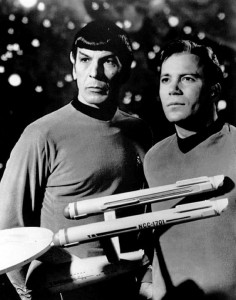 In our hectic lives we sometimes forget some of the basic lessons we learned in kindergarten. In an article last year titled “How Lessons From Kindergarten Can Help Office Civility” the author highlights some areas that can improve workplace productivity and overall happiness. These are simple, often overlooked lessons that when not practiced can leave us stressed and frustrated. As we approach the new year, it is a good time to commit to be more civil and open with coworkers. Here are some simple reminders that are just as important now as when we were kids.
In our hectic lives we sometimes forget some of the basic lessons we learned in kindergarten. In an article last year titled “How Lessons From Kindergarten Can Help Office Civility” the author highlights some areas that can improve workplace productivity and overall happiness. These are simple, often overlooked lessons that when not practiced can leave us stressed and frustrated. As we approach the new year, it is a good time to commit to be more civil and open with coworkers. Here are some simple reminders that are just as important now as when we were kids.
Smile
In the article mentioned above, some of the reasons for incivility include increased workload, stress, and being distracted when we should be paying attention to others. We may not even notice each other even though we exchange e-mails and texts and chats all day. I submit that a simple smile and a “good morning” would go far in creating a less stressful workplace. Those few seconds of interaction can open doors to authentic dialogue and better relationships and maybe even higher productivity. We often turn to technology to improve efficiency, but perhaps this simple step can contribute just as much.
Pay Attention
The urge to multitask can be great in our overloaded workdays, but when you are in a meeting or a presentation, it is polite to pay attention. We learned this lesson from our kindergarten teacher as well. A number of years ago I attended a meeting of coworkers in Texas. Most of us were teleworkers from various parts of the world so it was a genuine treat to get together and share ideas face-to-face. There was a jumble of LAN cables strung out on the conference room table so we could each connect to the internet while in the meeting. This was in the days before wireless connections and smartphones. I thought at the time of the absurdity of these internet connections when we had all spent so much time and effort to come together to work through issues. It did cause a distraction for some and we did not listen to the presenter as deeply as we could or should have. Let’s make a point of giving the speaker our full attention.
Extend a Kind Word
I challenge you this week to reach out and extend a kind word to at least one coworker every day. Compliment them on the fine work that they do or something else you appreciate about them. For some, this may be standard practice but for others it may be difficult. If it is hard at first, work at it! It will become easier and it will improve your office environment. Once you start it, others will want to join in. Initiate a “kind word” movement at your workplace today.
Culture
Every company and organization has a different culture and different set of values. I would be surprised if any of them actually valued incivility. Intel, for example, practices “constructive confrontation” which may actually appear as negative to an outsider. This is a problem solving method that encourages frank dialogue about any ideas or issues. Intel employees recognize feedback as a gift and get to problem resolution quicker through honest and sometimes blunt discussion. While the communication may be direct they still have respect for each other and individual opinions. This blend of constructive confrontation and respect has kept them at the top of the processor game for many years. No matter your organization’s culture, the lessons we learned in kindergarten still apply.
Thoughts
These are simple ideas but they are as important today as when we first learned them. Be polite, pay attention, and extend a kind word or a hand to your colleagues. Put down the technology once in awhile and notice and appreciate the great people you work with. Let me know your thoughts.
Kelly Brown is an IT professional and assistant professor of practice for the UO Applied Information Management Master’s Degree Program. He writes about IT and business topics that keep him up at night.







